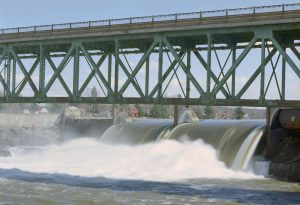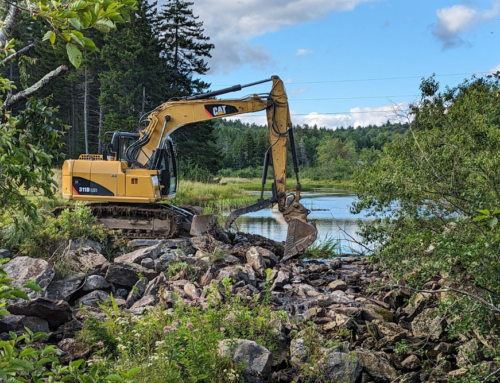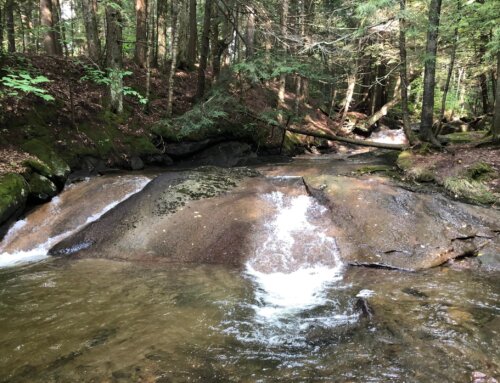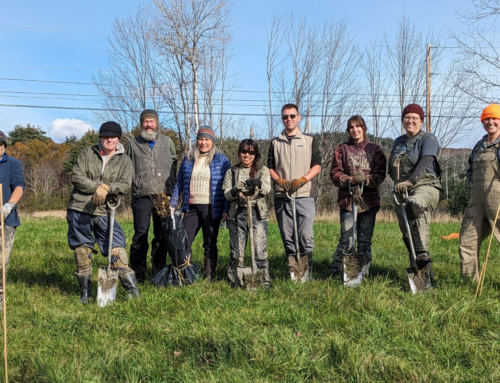
Spring freshet on Connecticut River at Turner’s Falls, MA. Photo: Al Braden
What does a fish say when it swims into a wall? Dam(n)!
Ok, that’s a tired joke. At the Connecticut River Conservancy, we’re tired of the failure to restore migratory fish runs in New England’s great river. For millennia, the migration of American shad, blueback herring, alewives, American eel, sea lamprey, and Atlantic salmon sustained the residents of the Connecticut River valley. Today, those fish runs are a shadow of their former size due to many factors, including hydropower dams.
Luckily, there’s good news. Recently, the Connecticut River Atlantic Salmon Commission, a Congressionally chartered state and federal compact responsible for managing the restoration of migratory fish, voted to significantly improve requirements for shad passage at hydroelectric dams on the Connecticut River. These requirements are based on the scientific and technical expertise and peer-reviewed work of career state and federal scientists and engineers.
Hydroelectric dams are required by law to provide safe, effective, and timely passage for migratory fish that use the same rivers as these energy facilities. In the Connecticut River, some migratory fish can travel upstream to Bellows Falls or beyond, more than 200 miles from Long Island Sound, to find suitable habitat to reproduce or grow into adults. Some species will also travel back downstream to the ocean. The dams, however, have blocked or impeded their travels upriver, while turbines and other hardware make their trip back difficult or deadly.
For many years, the federal and state agencies responsible for setting standards for safe, effective, and timely fish passage used a simple and insufficient requirement that 40-60% of migratory fish that passed a dam should be able to also pass the next dam upstream. The Connecticut River Atlantic Salmon Commission has voted unanimously to improve these requirements for passage of American shad both up and down the river. The new standards require that 75% of upstream migrating shad that come within 1 km of a dam must pass upstream within 48 hours, and 95% of juvenile shad migrating downstream need to pass unharmed within 24 hours of being within 1 km of the dam.
These more rigorous standards must be implemented if we are to finally start rebuilding these populations of migratory fish. American shad used to return to our rivers by the millions, where today the average run is in the hundreds of thousands.
Nowhere are these standards more necessary than at Turners Falls Dam, now owned by a Canadian investment company and operated as FirstLight. Over the last 20 years, this dam has only passed 1-15% of American shad that passed above Holyoke Dam each year. This means that hundreds of thousands of American shad and other migratory fish have been blocked from reaching historic upstream spawning grounds due to poor fish passage facilities at this dam. FirstLight has avoided meeting even the current passage requirements. They have profited by avoiding the costs of building modern and functional fish passage facilities.
The public should have no worries that this company can afford to meet these new requirements. FirstLight has spent years downplaying the revenue earned from using the public’s rivers to generate electricity. However, Connecticut River Conservancy has documented with publicly available data that both the Turners Falls Dam and Northfield Mountain pump storage facility earn hundreds of millions dollars more than the company has publicly reported to the federal government. It will certainly cost money to meet the requirements to restore appropriate fish passage, but this is money the company can well afford.
FirstLight has noticed the unfortunate trend of the Trump Administration’s political appointees in Washington overturning or mothballing career science staff. In 2018, FirstLight and their Washington attorneys invited the now disgraced Environmental Protection Agency Administrator Scott Pruitt and current Federal Energy Regulatory Commission Chair Neal Chatterjee to visit their hydropower facilities in Massachusetts. Connecticut River Conservancy’s freedom of information request revealed a poorly handled attempt to improperly influence these high-ranking federal officials. FirstLight swung and missed that time. Let’s hope they don’t try again because they might get whatever they want from Trump Administration appointees in Washington.
All energy facilities — solar, wind, and hydropower — have tradeoffs. Our job with hydropower is to better align the benefits of this “green” energy with the costs it imposes on our rivers and migratory fish. Fortunately, there is solid science and practical solutions to ensure we can balance the use of and protection of our rivers.
Andrew Fisk, Ph.D., is the executive director of the Connecticut River Conservancy and serves as the public sector representative from Massachusetts on the Connecticut River Atlantic Salmon Commission. This opinion does not represent the position of the Connecticut River Atlantic Salmon Commission and is solely that of Connecticut River Conservancy.
This opinion ran in the Greenfield Recorder on March 4, 2020.







